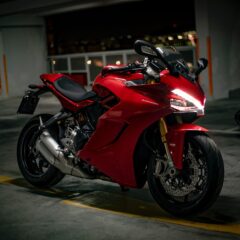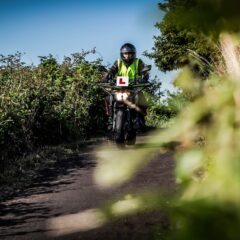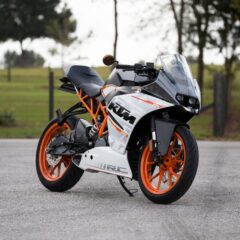
7 Top Motorcycle Accessories
With Christmas just around the corner, you might be wondering what to get your favourite motorcycle enthusiast or even a little something for yoursel...
 Phoenix Motorcycle Training LTD
Phoenix Motorcycle Training LTD
 Phoenix Motorcycle Training LTD
Phoenix Motorcycle Training LTD

In our last blog, we looked at riding skills and techniques that keep you safer on the road than your natural instincts. One of these core rider skills is steering. Using the tried and true motorcycle turning technique will help you manoeuvre faster and with more ease.
Mastering this motorcycle turning technique lets you work with your bike so it can do what it’s designed to do. Riding becomes more fluid and graceful. It will boost your enjoyment and safety on the road too.
To help you master this essential rider skill, we’ll break down the steps into manageable components. We’ll also note a few steering exercises for practising the technique. Practice these consciously, whenever you ride. It will help you develop your rider skills into habits that stay with you for life.
Riding a motorcycle, moped or scooter is a lot different from driving a car. Balance, speed, the laws of motion and the shape of motorcycle tyres all influence the way a motorcycle turns. And it’s a lot different to a car because there are just two wheels. That’s why the turning technique for motorcyclists is so important. Learning to ride a motorcycle introduces you to these, you’ll need to continue practicing to make them habits.
Unlike car tyres, motorcycle tyres are curved. They’re engineered in this way to make turning easier for riders – when they work with the design of their machines. They also help the motorcycle lean into a curve and ride smoothly through it. The way to begin doing this is to understand the physics behind motorcycling and develop motorcycle turning techniques and other skills into automatic habits.
Breaking down the motorcycle techniques for cornering and turning into smaller parts makes it easier to remember. There are four key components, each with smaller elements you’ll need to master. When you start practising, do so consciously and with intention each time you turn. Make it even more fun by putting them to use on a motorcycling track day. Intentionally putting these skills into action helps to embed them in your neural pathways. With repetition, the technique becomes a habit. That new habit will keep you safer and bring you more enjoyment each time you ride.
As you’re coming up to a turn, assume the correct position on your motorcycle. Relax your upper body, lower your arms to a horizontal position and keep your elbows loose. Your lower body should anchor firmly to your motorcycle. This is done by moving your bottom slightly inward, anchoring your outward thigh firmly toward the fuel tank and placing the balls of your toes on the footpeg.
As for your motorcycle controls, adjust your speed and change to the correct gear for the curve or corner that’s ahead of you. While still approaching the turn, choose your steering point. This is where you will give the steering command to your motorcycle (more on that in the next step).
Your speed must be at the desired cornering speed by the time you reach your steering point. You may need to use your front brake a little to achieve this. Don’t jerk your brakes, use them softly while shifting down gears. Select a gear that will give you enough power to move smoothly through the curve. Ease gently off the brake once you’re in the right gear.
Just before you reach the steering point and are conscious of where it is without looking directly at it, look towards the curve you are about to enter. Tense your stomach and the leg on the outside peg of your motorcycle. Now give a push on the opposite handlebar to the tense leg. You should push the side of the handlebar that corresponds to the direction of the curve.
The length and force of the push to the handlebar decide how quickly your motorcycle will change direction. Usually, a subtle push will suffice and you’ll maintain pressure until you reach the desired lean of your motorcycle. In wet conditions, it is imperative you use soft movements and are careful with your steering command.
To swerve in an emergency or otherwise turn quickly, the steering command needs to be shorter and sharper. You must be conscious of your anchoring from step one of the motorcycle turning technique, and the force of your push to the handlebar to give a precise steering command.
Right after giving the steering command, open the throttle slightly. This stops the engine from braking. Continue rolling on the throttle carefully through the rest of the turn. Careful and smooth acceleration works with Newton’s second law of motion, transferring weight to the rear wheel to achieve an optimal balance between the front and rear tyres. Your aim is to have slightly more weight on the rear than the front.
This also causes your motorcycle to move willingly through the curve, creates a better grip for the tyres and eats bumps without complaint. Having reached the correct lean and throttle control, the turn is almost completed.
As you reach the end of the turn, let your gaze move ahead down the road. Start considering the next stretch of road after the bend, corner or curve you’re about to complete. The motorcycle will straighten up with a steady increase to the throttle and you look ahead and push the outer side of the handlebar away from you.
Sometimes the steering point and command will be a little off and you will need to correct. This is OK, but be aware your instincts will try to take over from technique. You need to resist. Trust your bike and the technique. Collapse your upper body, position your forearms horizontally, anchor your steering command and open the throttle a little. With practice, you’ll overcome the urge to reduce the throttle, straighten your body and cling to the handlebars.
You should practice your motorcycle steering technique each time you ride. This is the fastest and most effective way to make this a reliable habit. The following exercises will help you combine each of the steps above into one smooth steering technique.
Choose a section of road you are familiar with. Choose a gear that provides enough power to complete a curve smoothly. Focus on your riding position and keep your grip on the handlebars loose. As you approach the curve, consciously anchor your weight on the outside footpeg. Be aware that you steer by pushing on the inward handlebar to countersteer once you are anchored firmly on the outside footpeg. Give your motorcycle the steering command at the correct steering point.
At a low speed on a familiar stretch of road, consciously practice choosing your steering point. Continue with the physical positioning and preparation from exercise 1. Right before reaching your steering point, move your gaze into the curve. Give your bike the steering command from your correctly anchored position.
At a low speed, combine the above two exercises on a familiar stretch of road and consciously work with your throttle. On the first try, ride through the curve with the throttle slightly closed off after giving the steering command. This is the opposite of the correct turning technique described above and it will show your bike’s reluctance to steer and how your engine brakes slightly.
On the second and subsequent rides, slightly accelerate immediately after giving the steering command to your machine. Notice how your motorcycle is more willing to move through the curve and works in harmony with the engine, transferring weight from the front to the back of the bike. Practice this until it becomes a habit to open the throttle immediately after giving the steering command.
Now try opening the throttle smoothly throughout a curve. Remember to choose a gear that provides consistent power. Repeat this exercise until it becomes a habit. Once mastered, you can gradually increase your speed with each of these three exercises, without braking before turns. When you feel a wave of satisfaction, you know you’re getting it right!
Getting better at turning your motorcycle takes practice. Conscious practice will help you improve faster and be aware of your progress too. Mastering the motorcycle turning technique is a satisfying feeling that will urge you to improve other areas of your riding too. Watch for next week’s blog about braking effectively and safely.

With Christmas just around the corner, you might be wondering what to get your favourite motorcycle enthusiast or even a little something for yoursel...

If you love motorcycle riding, you’ve probably daydreamed about riding a motorbike for a living. A professional racer or stunt rider is OK for some...

Getting a UK motorcycle licence can seem a complicated process. Particularly when compared to a driving licence for a car. Whether you choose the pro...
This website uses cookies to personalise content, ads, and analyse traffic, sharing data with partners who may combine it with other information. See our Privacy Policy for more information.